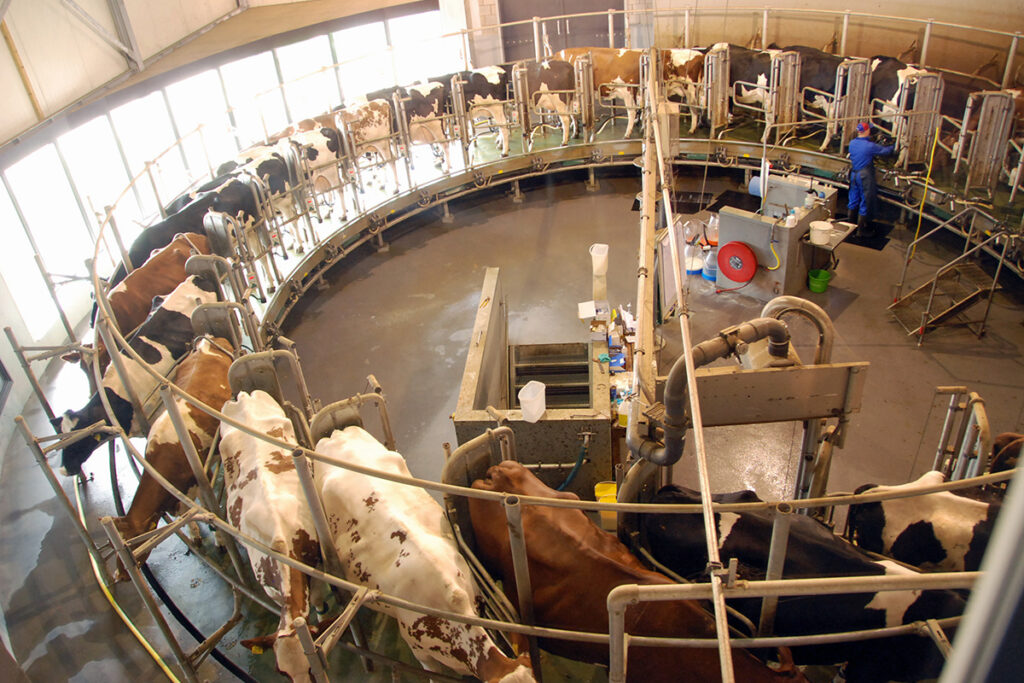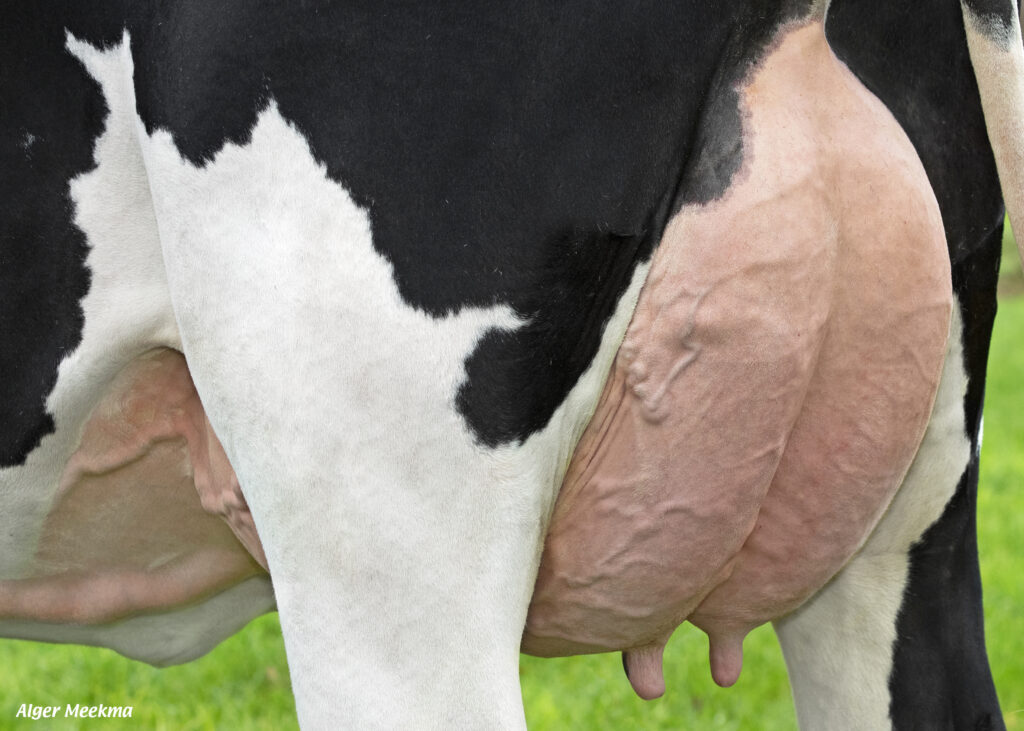Improving udder health
To increase herd longevity we focus on the three main reasons for culling, with the aim of ensuring that cows achieve higher lifetime production with ease. Problems with udder health can lead to cows being culled prematurely. A sound, healthy udder is vital for milk production. Largely due to genetic progress, the udder health of dairy herds in the Netherlands has improved considerably in recent years. However, many factors influence good udder health and one of the main ones is good management.

Choice of bull plays a role
Mastitis resistance is partly hereditary and can be positively influenced by selective breeding. Bulls that score high for udder health produce cows that suffer less from inflamed udders and have a lower somatic cell count, both of which reduce the incidence of problems. Growing numbers of dairy farmers are selecting bulls with good breeding values for udder health, somatic cell count and udder depth. If udder health is a key focus during sire selection in successive generations, an essential and significant improvement can be seen in the herd.
Relationship between udder depth and udder inflammation
Research has revealed a strong correlation between cows that suffer from udder inflammation and cows with a deep udder. Taking a preventive approach and selecting bulls that produce daughters with lower somatic cell counts, better udder health and shallower udders reduces the risk of mastitis and a higher somatic cell count. With 100 as the average, any score higher than 100 will introduce positive progress. Using bulls that score higher than 100 for udder health already results in a 5% lower risk of mastitis in the next generation.
High score for udder health
The bull portfolio of K.I. Samen offers a number of interesting bulls with high scores for udder health, in the black-and-white and red-and-white segments. These sires originate from cow families with low somatic cell counts and transmit the right genetics for good udder health. A bull with a breeding value of 108 produces daughters that generally have a 3.5% lower incidence of mastitis. Bulls such as Tobor (109), Kanheri (107) and Varys (106) score high for this trait. Their daughters have healthy udders so require less attention from farmers.
“Cows without udder problems require less attention from farmers”
Working hygienically starts in the parlour
Other factors play a role in addition to the cow’s genetic predisposition. Observing good hygiene practice is vital to maintain healthy cows and udders. We recommend using an individual udder cloth or wipe for each cow at milking and rinsing the milking clusters with hot water of at least 75° Celsius after milking. The teats should be disinfected with a dip or spray to prevent bacteria from entering the udder. In addition, you can also decide to milk cows with high somatic cell counts last.

Clean barn and cubicles
Most mastitis infections are environment-related. Ensure good environmental hygiene by cleaning the floor and cubicles every day. This will reduce how much manure is walked into the cubicle, minimise the build-up of bacteria and lower the risk of infection. Make sure there is sufficient dry bedding material in the cubicle and apply chalk to absorb any moisture if necessary. Also refresh the bedding regularly.
Consistency leads to successful dry off
Observing good hygiene during dry off is also extremely important, as cows entering the dry period can become infected easily. Good environmental hygiene, well-planned preparation and a consistent dry off process are the success factors that contribute to dry off management in relation to udder health. At the K.I. SAMEN breeding station and dairy farm, great care is taken to prevent udder infections during dry off.
Curious about the dry-off policy at the breeding and dairy company K.I. Samen? In this article, Ralph Engelen explains the dry-off process that is applied with a fixed protocol at the company.
Cows with excellent udder health deliver various benefits for farmers:
- Better milk quality: cows with healthy udders generally produce better quality milk.
- Higher milk production: cows with udder health problems such as mastitis may yield less milk due to udder pain and discomfort.
- Cost savings: mastitis and other udder health problems can lead to additional costs for treatment.
- Low labour input: less time and energy needs to be spent on treating sick cows.
- Higher longevity: farmers can benefit from the milk production and genetic traits of the cow for longer. Fewer replacement heifers are needed.

